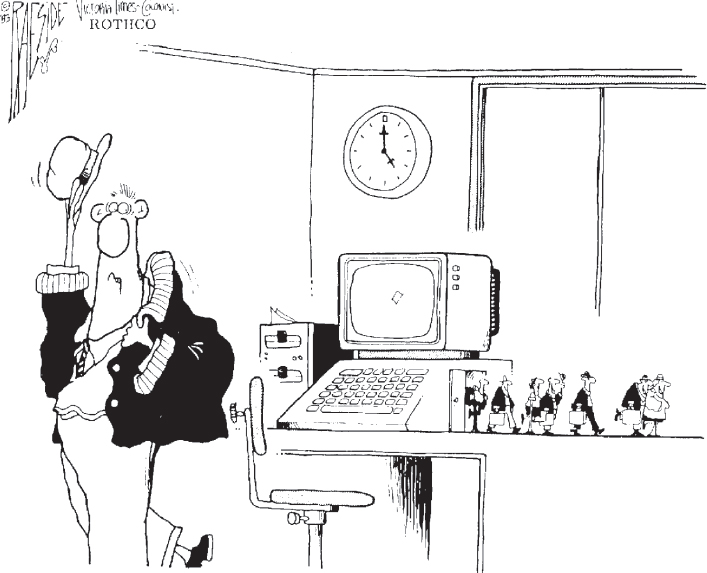CHAPTER 6
THE LITTLE MAN COMPUTER

Used by permission of The Times Colonist, Victoria, B.C., Canada
6.0 INTRODUCTION
The power of a computer does not arise from complexity. Instead, the computer has the ability to perform simple operations at an extremely high rate of speed. These operations can be combined to provide the computer capabilities that you are familiar with.
Consistent with this idea, the actual design of the computer is also simple, as you will see.
(The beauty of the design is that these simple operations can be used to solve extremely complex problems. The programmer's challenge, of course, is to produce the exact sequence of operations to perform a particular task correctly under all possible circumstances, since any error in selection or sequence of operations will result in a “buggy” program. With the large number of instructions required by modern programs, it is not surprising that few of today's programs are truly bug-free.)
In this chapter, we will begin to explore the operations that the computer is capable of performing and look at how those operations work together to provide the computer with its power. To simplify our exploration, we will begin by introducing a model of the computer; a model that operates in a very similar way to the real computer but that is easier to understand instinctively. (Although the real computer uses binary numbers, the model ...
Get The Architecture of Computer Hardware, Systems Software, & Networking: An Information Technology Approach, 5th Edition now with the O’Reilly learning platform.
O’Reilly members experience books, live events, courses curated by job role, and more from O’Reilly and nearly 200 top publishers.

